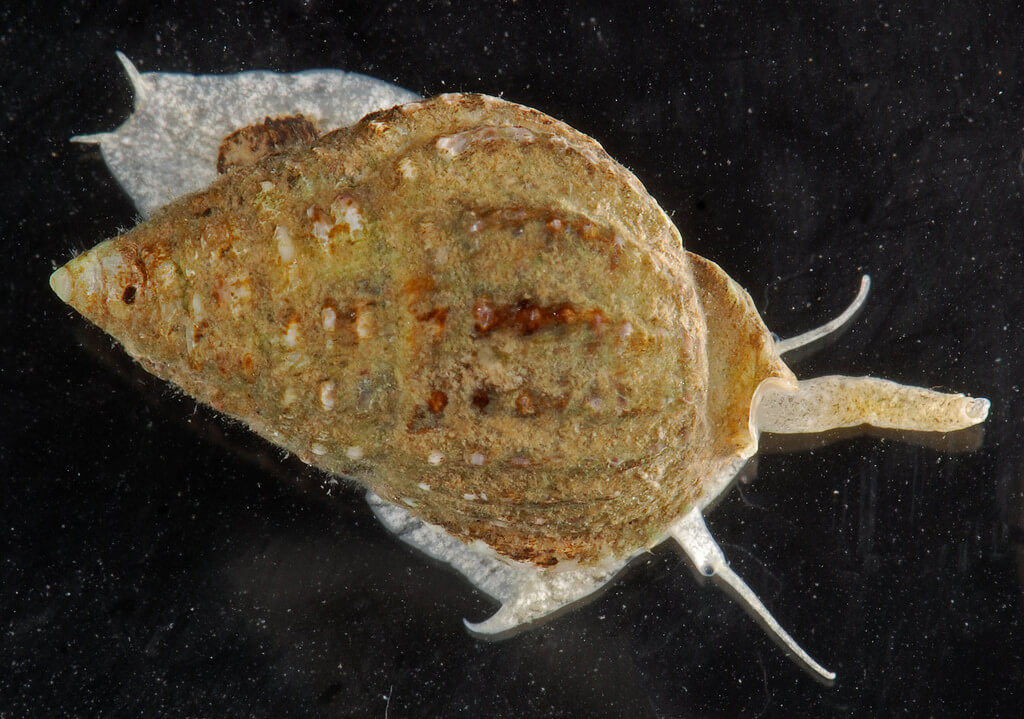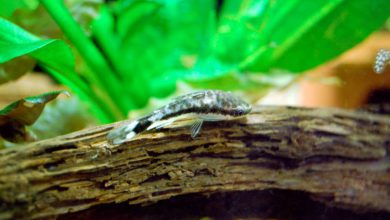Nassarius Snail Care

The Nassarius snail is an easily-maintained marine (saltwater) species. The care levels they require are minimal – not only will they source their own food on most occasions but they can also help to keep your tank clean by feasting on unsightly detritus.
Nassarius snails will slowly comb through the bottom of your aquarium, scavenging on uneaten fish food, waste materials and even dead organisms that have found their way to the bottom of your saltwater aquarium.
While these snails aren’t active enough to keep you entertained at all times, they are therefore pretty helpful in the aquarium’s ecosystem.
Now that you know all the benefits of having Nassarius snails in your fish tank, let’s talk about all the things that you need to know to take care of these little organisms!
Nassarius Snail Habitat

Nassarius snails can be found in the wild, but these specimens often don’t fare well in a closed aquarium setting.
To get over this hurdle, it is generally safest to select Nassarius snails that have been bred in captivity. As you will be putting them in your own aquarium that will simulate similar conditions to what they are used to, meaning that minimal adjustment by your snails will be required.
Tank Size
Nassarius snails only reach a maximum shell size of around ¾ inch, meaning that they can be accommodated in almost any size of marine tank – including the tiny little nano tanks which have become popular in recent years.
The one consideration to make is how many snails can be safely accommodated in your tank. Here most experts recommend a stocking ratio of approximately one or two snails for every gallon of water.
Water Temperature
The Nassarius snail is a saltwater organism. It needs stable temperatures to survive in a captive setting. The ideal temperature for this variety of snails is anything between 72°F and 80°F (which translates into 22°C and 27°C). This is quite a wide range of temperatures when compared to other components of saltwater aquariums, such as corals. This is handy, as it can make them quite easy to care for in captivity, as they can thrive in a variety of conditions.
Water Composition
Other than temperature, there are a number of factors that influence the composition of your aquarium’s water. Some key points to keep in mind are the pH levels and the specific gravity. When it comes to pH, the preferable range for Nassarius snails is roughly 8.3 or 8.4. The specific gravity should be between 1.023 and 1.025.
Lastly, as with most invertebrates, Nassarius snails cannot survive in water with high nitrate levels. The levels should remain less than 20 ppm for these snails to thrive.
Equipment and Plants
Nassarius snails have very limited requirements. Of course, you’ll need to install a good quality filtration system so that the water remains clean at all times.
One important requirement is a good amount of sand at the bottom of the fish tank. This is important as Nassarius snails spend most of their time buried into the sand, scavenging for any uneaten food items, decomposing parts of living organisms and so on. Other than this, you can pretty much add whatever suits your fancy. It can be ornamental rocks, driftwood, aquarium plants and so on.
Behavior of Nassarius Snails
Nassarius snails are very peaceful. They do not show many signs of aggression at any point in their lives. Having said that, there have been instances of a few of these snails getting together and attempting to cause harm to another snail or small creature.
Ensure that there is a big enough sand bed and you will only see the Nassarius snails in your aquarium when it is time for them to have a meal.
Integration into the Tank
Nassarius snails may be easy to care for but you shouldn’t just drop them into your tank and forget about them. There is a specific acclimatization procedure to be followed that will help to integrate these little creatures into your aquarium.
As in the case with most invertebrates, you should consider using the slow drip method to do this. Using a separate bucket and a siphon drip line, you will slowly get the snails used to the water in the aquarium, before transferring them to your main tank.
Best Tank Mates
As snails are not aggressive by nature, they can work well with all other peaceful co-inhabitants of your aquarium. Nassarius snails will even survive living with many more aggressive species, so long as they aren’t known snail eaters.
The only restriction here is that they should all be creatures of the sea or oceans. The Nassarius snail is a saltwater organism and it must be kept in conditions simulating its marine ecosystem. You cannot add freshwater fish to such aquariums or place Nassarius snails into freshwater aquariums .
Fish That Don’t Work Well
As snails are pretty much defenseless, you don’t want to put them in situations where they might need to defend themselves. There are a number of species that enjoy eating snails. In other words if you have snails and are contemplating over which fish to buy, avoid any of these snail eaters.
In addition to these, crabs don’t tend to work well with snails, often attacking and even killing them.
Feeding Nassarius Snails
The Nassarius snail is essentially a scavenger. If you add these organisms to a well-established aquarium, you may not need to even feed the snails, as they will go through the sand bed and eat any detritus that they find.
They eat leftover food, waste, as well as remains from dying or dead organisms.
However, if that food isn’t enough, you can supplement their diet with things like algae wafers, fish food pellets or frozen brine shrimp. They are particularly biased towards meat and can consume mussels, clam, scallops and so on.
Breeding
While snails are notorious for multiplying in number, the Nassarius snail isn’t very easy to breed.
While these snails lay eggs routinely, the possibility of them maturing is very low. There can be many reasons behind this, like other fish in the tank, eggs getting buried in the sand bed and so on.
The process isn’t impossible but as these snails are available with professional breeders for a very low cost, the entire exercise may not make too much sense.
Final Thoughts
Nassarius snails are an interesting organism to add to your saltwater aquarium. While they might not have all the color and shine that other tank inhabitants offer, they are none-the-less interesting to watch. Of course, they can also cut down on your tank maintenance, acting as an organic “cleanup crew”.
What’s not to love?
Photo by SERC Photos 


